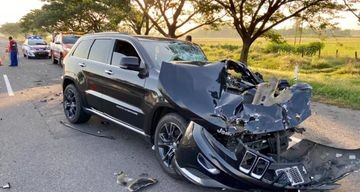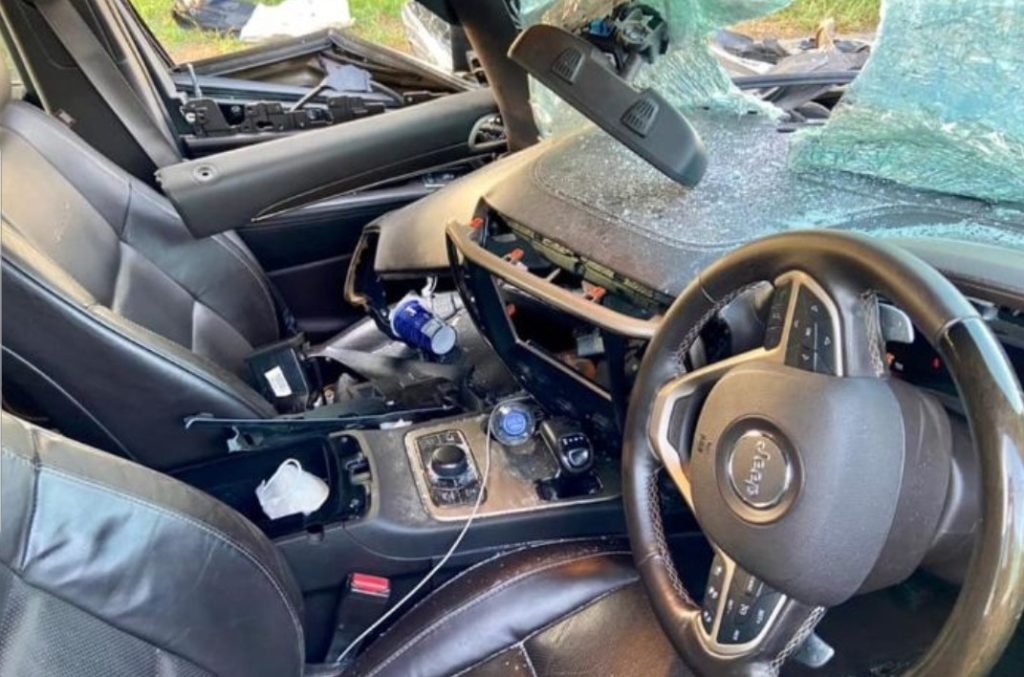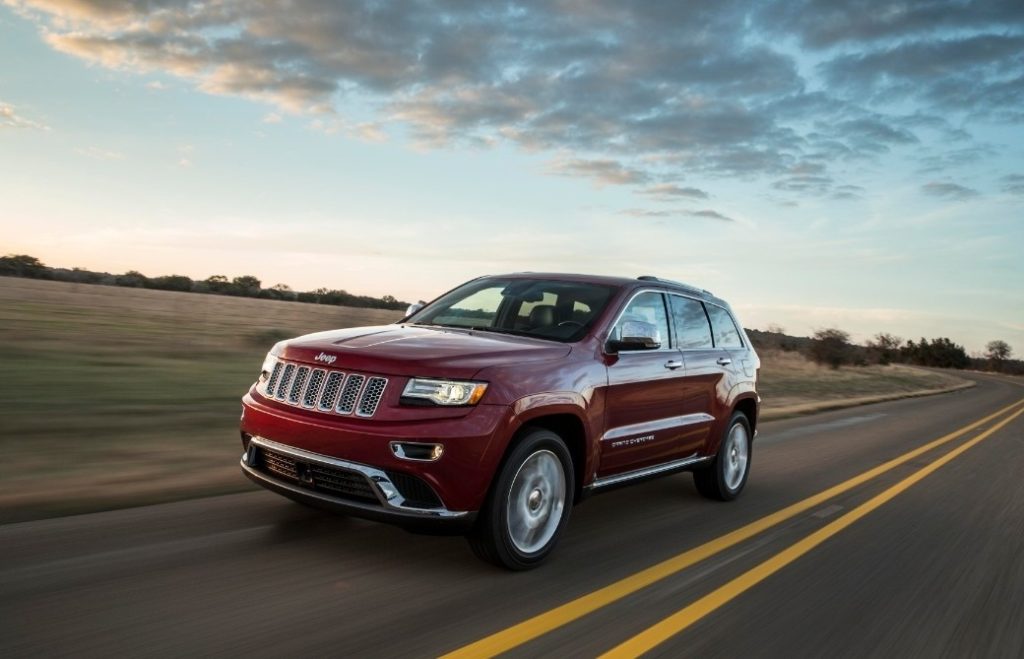
Tuntutan hukum yang diajukan Muhammad Al Abdullah, Bos PT Garasindo Inter Global Indonesia yang mengalami kecelakaan saat mengendarai Jeep Grand Cherokee di jalan Tol Kanci beberapa waktu, berhasil diungkap.

Pihak FCA selaku pemegang merk Jeep Indonesia langsung bertanggung jawab mengungkap masalah fitur Active Brake Collision System (ABCS) dan sistem airbag tak mengembang yang terjadi pada tragedi kecelakaan itu. Investigasi langsung dilakukan oleh STELLANTIS, pabrikan otomotif multinasional yang dibentuk oleh merger perusahaan Italia-Amerika, Fiat Chrysler Automobiles (FCA) dan perusahaan Prancis, PSA Group di tahun 2021 yang memegang merek kendaraan Jeep.

Melalui PT DAS Indonesia Motor, Dhani Yahya, COO dari Jeep® Indonesia menjelaskan, “Dikutip dari penjelasan resmi yang telah DAS Indonesia Motor terima, kami umumkan hasil yang ditemukan oleh Tim investigasi dari Stellantis adalah sebagai berikut;
“No manufacturing responsibility found in this incident. The Seat Belts are the primary safety restraint system in this vehicle. The area of primary impact was over and above the Supplemental Restraint System sensor focus area, with the impact energies being dissipated by the crush of various sheet metal structures. Therefore, the rate of deceleration required to activate the air bag system was not met.”
“Tidak ada tanggung jawab manufaktur yang ditemukan dalam insiden ini. Seat belt menjadi sistem penahan keamanan utama dalam kendaraan pada saat kejadian. Area tabrakan/tumbukan utama berada di bagian atas dari area fokus sensor Supplemental Restraint System bekerja, dengan energi benturan yang dihamburkan oleh berbagai struktur lembaran logam. Oleh karena itu, laju perlambatan yang diperlukan untuk mengaktifkan air bag system tidak terpenuhi.
Seperti juga yang tertuang dalam Buku Manual Kendaraan Jeep Grand Cherokee tahun 2014, halaman 73-74 menjelaskan:
Air Bag Deployment Sensors And Controls
Occupant Restraint Controller (ORC)
– The ORC is part of a Federally regulated safety system required for this vehicle.
– The ORC determines if deployment of the front and/or side air bags in a frontal or side collision is required. Based on the impact sensor’s signals, a central electronic ORC deploys the Advanced Front Air Bags, Supplemental Driver Side Knee Air Bag, SABIC air bags, SAB air bags, and front seat belt pretensioners, as required, depending on several factors, including the severity and type of impact.
– Advanced Front Air Bags and Supplemental Driver Side Knee Air Bag are designed to provide additional protection by supplementing the seat belts in certain frontal collisions depending on several factors, including the severity and type of collision. Advanced Front Air Bags and Supplemental Driver Side Knee Air Bag are not expected to reduce the risk of injury in rear, side, or rollover collisions.
– The Advanced Front Air Bags and Supplemental Driver Side Knee Air Bag will not deploy in all frontal collisions, including some that may produce substantial vehicle damage — for example, some pole collisions, truck underrides, and angle offset collisions. On the other
– hand, depending on the type and location of impact, Advanced Front Air Bags and Supplemental Driver Side Knee Air Bag may deploy in crashes with little vehicle front-end damage but that produce a severe initial deceleration.
– The side air bags will not deploy in all side collisions. Side air bag deployment will depend on the severity and type of collision.
– Because air bag sensors measure vehicle deceleration over time, vehicle speed and damage by themselves are not good indicators of whether or not an air bag should have deployed.
– Seat belts are necessary for your protection in all collisions, and also are needed to help keep you in position, away from an inflating air bag.
– The ORC monitors the readiness of the electronic parts of the air bag system whenever the ignition switch is in the START or ON/RUN position. If the key is in the OFF position, in the ACC position, or not in the ignition, the air bag system is not on and the air bags will not inflate.
– The ORC contains a backup power supply system that may deploy the air bags even if the battery loses power or it becomes disconnected prior to deployment. Also, the ORC turns on the Air Bag Warning Light in the instrument panel for approximately four to eight seconds for a self-check when the ignition is first turned on. After the self-check, the Air Bag Warning Light will turn off. If the ORC detects a malfunction in any part of the system, it turns on the Air Bag Warning Light, either momentarily or continuously. A single chime will sound if the light comes on again after initial startup.
Hasil investigasi yang dilakukan Stellantis pun tidak mengungkapkan adanya indikasi cacat manufaktur yang menyebabkan dan atau berkontribusi pada insiden yang dialami atas kendaraan tersebut.

“Dengan temuan hasil investigasi teknis yang sudah di umumkan ini, kami harap pertanyaan penyebab insiden ini sudah dapat terjawab, dan sekali lagi kami sangat bersimpati atas insiden yang telah terjadi dan kami siap membantu konsumen untuk memperbaiki kendaraan tersebut hingga selesai.” tutup Dhani melalui pengumuman resmi ini.


































KOMENTAR (0)